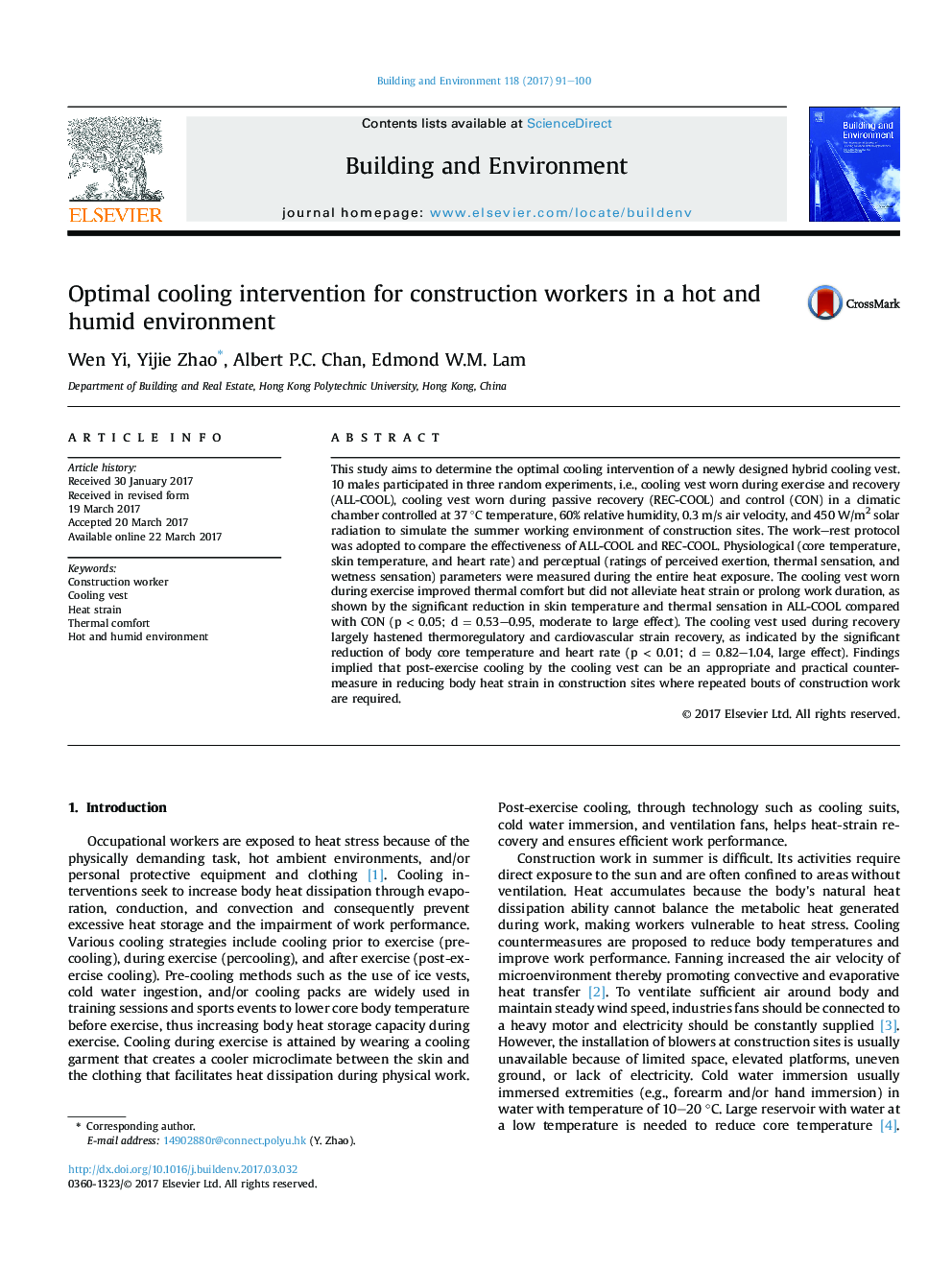| Article ID | Journal | Published Year | Pages | File Type |
|---|---|---|---|---|
| 6479257 | Building and Environment | 2017 | 10 Pages |
â¢The cooling vest alleviates heat stress and improves thermal comfort.â¢Percooling and post-exercise cooling is compared.â¢Optimal intervention of cooling vest is determined.
This study aims to determine the optimal cooling intervention of a newly designed hybrid cooling vest. 10 males participated in three random experiments, i.e., cooling vest worn during exercise and recovery (ALL-COOL), cooling vest worn during passive recovery (REC-COOL) and control (CON) in a climatic chamber controlled at 37 °C temperature, 60% relative humidity, 0.3 m/s air velocity, and 450 W/m2 solar radiation to simulate the summer working environment of construction sites. The work-rest protocol was adopted to compare the effectiveness of ALL-COOL and REC-COOL. Physiological (core temperature, skin temperature, and heart rate) and perceptual (ratings of perceived exertion, thermal sensation, and wetness sensation) parameters were measured during the entire heat exposure. The cooling vest worn during exercise improved thermal comfort but did not alleviate heat strain or prolong work duration, as shown by the significant reduction in skin temperature and thermal sensation in ALL-COOL compared with CON (p < 0.05; d = 0.53-0.95, moderate to large effect). The cooling vest used during recovery largely hastened thermoregulatory and cardiovascular strain recovery, as indicated by the significant reduction of body core temperature and heart rate (p < 0.01; d = 0.82-1.04, large effect). Findings implied that post-exercise cooling by the cooling vest can be an appropriate and practical countermeasure in reducing body heat strain in construction sites where repeated bouts of construction work are required.
